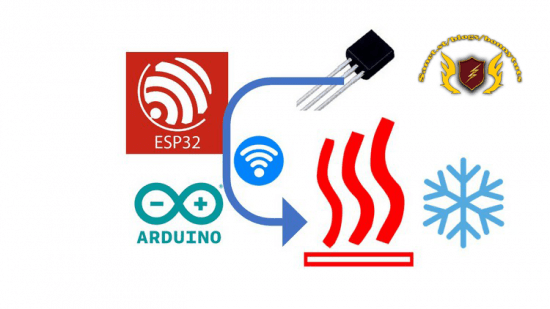 Published 11/2022
Published 11/2022Created by Abd Almonem Doolaanea
MP4 | Video: h264, 1280×720 | Audio: AAC, 44.1 KHz, 2 Ch
Genre: eLearning | Language: English | Duration: 22 Lectures ( 5h 29m ) | Size: 4.11 GB
Measure and control temperature with OLED display and datalogging in SD card and Google sheet
What you’ll learn
Learn different types of temperature sensors and where to use each type.
Measure temperature with Arduino/ESP32, record data in SD card, display on OLED and send to Google sheet.
Learn different methods for heating and cooling using off-shelf low-cost components.
Build complete temperature control system with minimal programming knowledge.
Learn how to utilize available resources (codes from examples and internet) and fit them into your project.
Requirements
Basic programming skills using Arduino IDE.
Basic knowledge about Arduino hardware.
Description
This is the second course in the DIY Lab Equipment with Arduino series. After we learnt the basics in the first course, now we APPLY the knowledge to measure and control the temperature for our experiment setup or project. Temperature is essential in almost any experiment and it is important to record it continuously. This is why we directly employed SD card module to save the records so that we can retrieve them and put them in Excel for example. We also included how to send the data to Google sheet so that online monitoring can be done anywhere. We also added OLED display to show the measurements so that the system can be used easily independent from the computer.After learning temperature measurement, we moved to explain different ways of heating and cooling. We made a complete setup to measure the temperature and use it to control heating and cooling of water as an example of experiment setup. We employed PWM to precisely control the temperature. Similar setup can be applied in different ways to fit to our experiment. Like other course, we use off-shelf components that are readily available at low cost.During this course, we practice how to utilize available codes from the internet or library examples and fit them in our project with minimal coding experience. If you have no knowledge about coding and Arduino, it is highly advised to take the first course (DIY Lab Equipment with Arduino-Part 1-The basics).In the next course we will learn about liquid handling that includes the properties and use of different pumps and how to make your own pump to use it to control liquid transfer.
Who this course is for
Students and researchers looking to add temperature measurement or control to the experiments.
Non-engineers looking to utilize available off-shelf heating and cooling modules.
Chemistry, biology, physics, biomedical, medical, pharmaceutical lab students, researchers and staff who need to make DIY equipment
Password/解压密码www.tbtos.com
转载请注明:0daytown » DIY Lab Equipment with Arduino-Part 2-Temperature Control